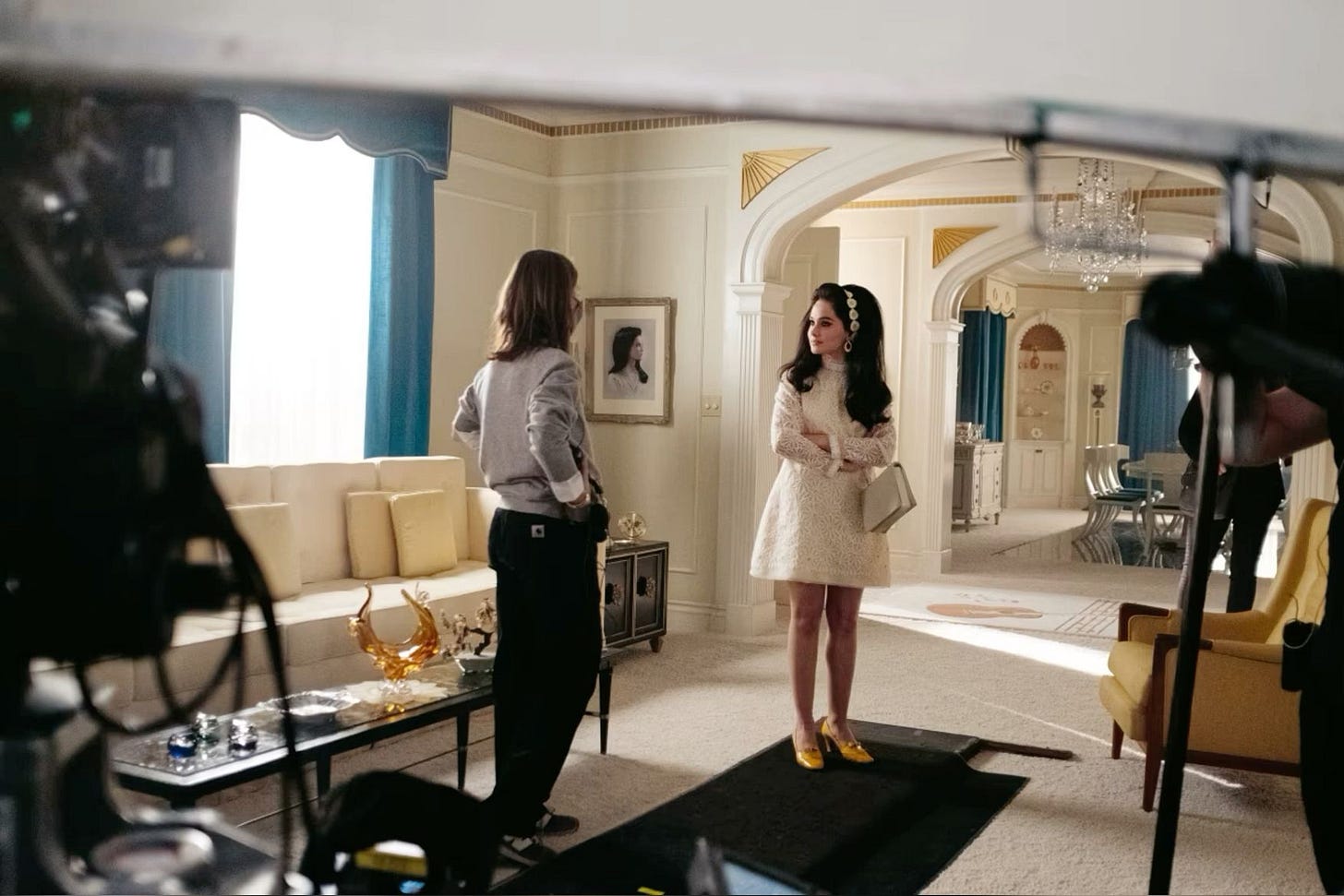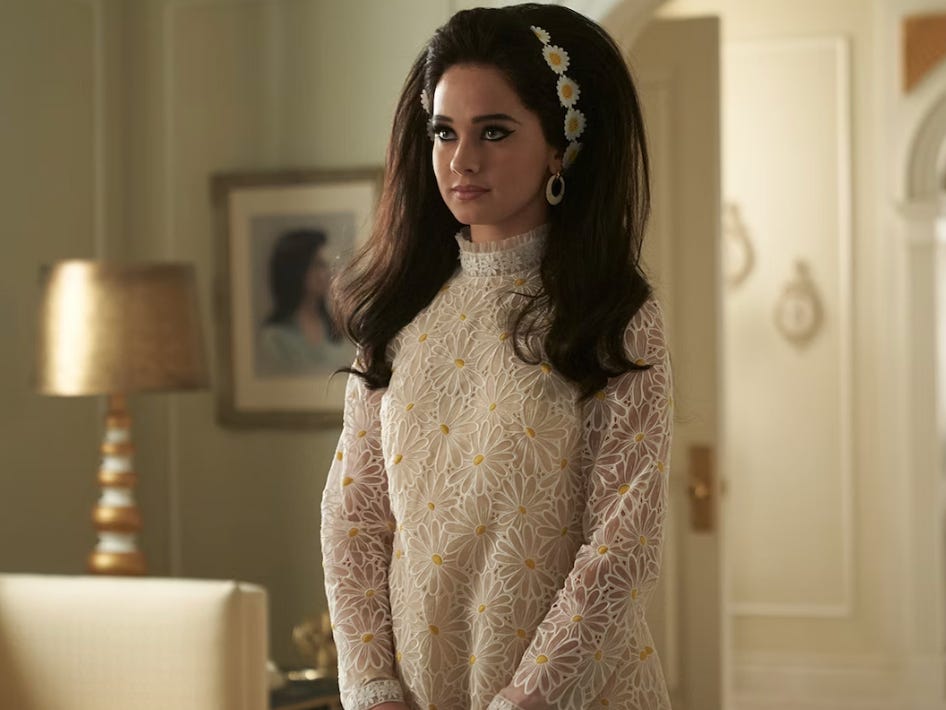Behind the haze of lace, eyeliner, loads of hairspray, red nail polish, lipstick, kitten heels, and Chanel perfume, lies a woman of quiet courage. A woman whose teenage girlhood was spent wandering the halls of Graceland and worshipping Elvis Presley. I’ve watched Priscilla twice now and cannot stop obsessing over the film’s beauty. I was so mesmerized that I then watched the behind the scenes of the film and read the article Sofia Coppola’s Path to Filming the Gilded Adolescence — both of which I highly recommend if you are a lover of Sofia Coppola films.
From The Virgin Suicides, Lost In Translation, Marie Antoinette, The Bling Ring, to now Priscilla, Sofia’s works all have such a strong aesthetic. Many directors, I’ve found, are sometimes unable to fully commit to creating an aesthetic for their films. Sofia Coppola has no difficulty with this and even goes beyond the line of simple aesthetically pleasing cinema. As a Libra, her films are some of my favorites because I’m enthralled by their beauty. I find myself wanting to actually pause the film in order to fully soak in the beauty. Priscilla, in particular, is an aesthetic I’m currently loving— the aesthetic of a girl in the 60s.
A major part of film aesthetic is design—set design as well as fashion design. According to the behind the scenes video, Sofia was denied access to Graceland and instead, had to create a mock-Graceland. Without this knowledge, I would not have known it wasn’t the real deal as her replication was a detailed masterpiece. She is an aesthetic visionary. My favorite part of any aesthetic film is the fashion design. I mean, I want to steal Priscilla’s entire wardrobe. In a way Priscilla is sort of Elvis’ doll, which is highly presented in the fashion and her petite figure. While it is saddening that Priscilla didn’t have the freedom to choose her own look in the beginning years of their relationship, the outfits, makeup, and hair were beautiful. Personally, my favorite outfit is the lace long sleeve mini dress with floral detailing. She wears a headband of daisies and yellow kitten heels with a pointed toe. It’s just so perfect.
One similarity between Sofia’s women characters is that their feelings are expressed through reactions and moments of silence rather than through words. Her characters learn to be assertive and find their voice through their difficult experiences. Which is a direct parallel to women in modern-day. We are often silenced and placed into this box to be “perfect”. In reality our minds are racing and we’re just yearning for the right moment to speak up. Luckily, our world has progressed in terms of women-equality since the 60s, however, I still see women who are trapped within their own minds unable to grasp the words they desire to scream at the top of their lungs. Perhaps Priscilla has had such an impact on me is not because I am in any situation close to what she endured with Elvis, but more that I understand this desire to be loved and cherished. And sometimes with that desire you find yourself compromising your sense of independence and mostly, your ability to speak your mind. I guess I connect with a lot of Sofia’s characters for that reason as well. I mean, we have Charlotte (Scarlett Johansson) in Lost In Translation who struggles with loneliness in an unfulfilling relationship and self-discovery time of her life. We also have the Lisbon sisters in the Virgin Suicides that never get the chance to speak up and instead do so through a tragic and unanswered cry for help. These core characteristics are what makes the characters of Sofia’s films so appealing and relatable even when we aren’t necessarily experiencing the same thing.
Specifically, Cailee Spaeny speaks of the importance in reacting when portraying Priscilla. So much of her character was built around her facial expressions and the emotion behind her eyes. As the movie progress, we see that Priscilla gets more and more fed up with Elvis’ behavior and she begins to voice her opinions. But still, through her words we see the pain of a girl, not a woman. Cailee Spaeny does a perfect job capturing the fact that Priscilla was simply a girl. A girl without the typical teenage lifestyle. Personally, I loved Spaeny’s performance as Priscilla and am looking forward her future work.
By watching the behind the scenes and reading The New Yorker article, my new dream of working on a film production set laid before my eyes. I’m so drawn to the filming process (and perhaps the fact that Sofia and the other workers play pickleball between takes and everyone on set seems truly excited to be there). It seems to be such a magical experience watching the pieces fall into place to create something more beautiful than you could’ve imagined.








